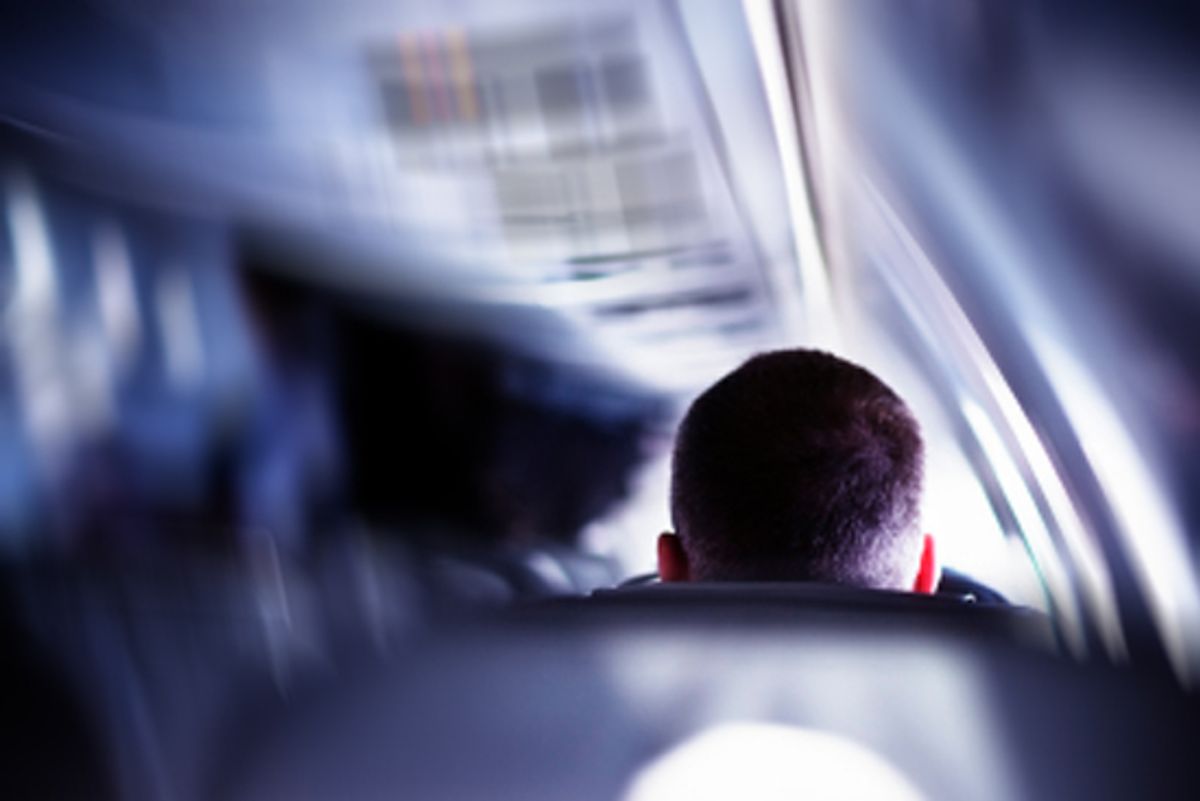We hit some pretty rough air the other night, in the blackness about halfway to Europe. It was the kind of turbulence people tell their friends about.
It came out of nowhere and was bad enough to knock over some carts in the rear galley. I had my seatbelt on, as pilots always do, but reflexively put my hand against the cockpit ceiling to brace myself.
About 90 seconds later it was smooth again.
These things happen. Pilots work to avoid unstable air when they can, taking their cues from weather charts, radar returns and real-time reports from other aircraft. Some meteorological indicators are more reliable than others. For example those burbling, cotton-ball cumulus clouds -- particularly the anvil-topped variety that occur in conjunction with thunderstorms -- are almost always a lumpy encounter.
Flights over mountain ranges and through certain frontal boundaries will also get the cabin bells dinging, as will transiting a jet stream boundary.
But predicting the where, when and how much of turbulence is more art than science, and every now and then it's totally unexpected.
Before hitting those bumps, what info we had told us not to expect anything worse than a little light chop. Later, in an area where stronger turbulence had been forecast, it was perfectly smooth. You just don't know.
If the seatbelt sign comes on for what seems to be no apparent reason, this is often why.
During the worst of it, to the sound of crashing plates, I remembered a recent e-mail. A reader had asked about the displacement of altitude during times like this. How many feet is the plane actually moving up or down, side to side? To the anxious flier, those bumps and jots often feel like plummets of hundreds or even thousands of feet.
They're not. I kept a close watch on the altimeter. Fewer than 50 feet either way is what I saw. Ten or 20 feet, most of the time. Any change in heading (the direction our nose was pointed) was virtually undetectable.
Point being: It feels worse than it is. The plane isn't falling from the sky. Even in the roughest air a jet stays pretty much on an even keel.
Indeed, one of the worst things a pilot can do during severe turbulence is try to fight it. Some autopilot systems have a special mode for use in such situations. Rather than increasing the number of corrective inputs, it does the opposite, desensitizing the system.
Pilots will also slow the jet to its designated "turbulence penetration speed" to guard against high-speed stalls and keep any particularly potent jolt from damaging the airframe. (That speed is often very close to normal cruising speed, however, so you probably wouldn't notice any deceleration from Row 27.)
They can also request higher or lower altitudes or ask for revised routings. Climbs or descents in search of smoother air are very common domestically or when flying in radar contact, but they are difficult to coordinate on oceanic crossings. Often, over the ocean, unless conditions become severe, you're more or less stuck with a crappy ride.
Up front, you can imagine a conversation going something like this:
Pilot 1: "Well, why don't we slow it down." [Reaches for the speed control selector and dials in the correct value]
Pilot 2: "Ah, man, this is spilling my coffee all down inside this cup holder."
Pilot 1: "Let's see if we can get any new reports from those planes up ahead." [Reaches for the microphone and double-checks the frequency]
Pilot 2: "Do you have any napkins over there?"
There would also be an announcement made to the passengers and a call to let the cabin crew know to make sure they too were belted in. Pilots often request that the flight attendants remain in their seats if things look menacing up ahead. This earns some smirks when, just as often as not, the air turns out smoother than silk. But as I said, you just don't know.
If I've learned anything in answering e-mails from the flying public, it's to never underestimate people's fear of turbulence. It is far and away the No. 1 worry of nervous, and even not-so-nervous, fliers.
That's a little surprising to me because pilots generally see turbulence as a comfort and convenience issue, not a safety issue per se.
That being true, I freely concede that powerful turbulence has, on numerous occasions, damaged planes or injured their occupants. But these are the kind of bumps that most passengers -- and most pilots for that matter -- will go a lifetime without experiencing. About 60 people, two-thirds of them flight attendants, are injured by turbulence annually in the United States. That works out to about 20 passengers. Twenty out of the 800 million or so who fly each year in this country. Repeat: 20 out of 800 million. That's 0.0000025 percent.



Shares